Xanthoconium affine
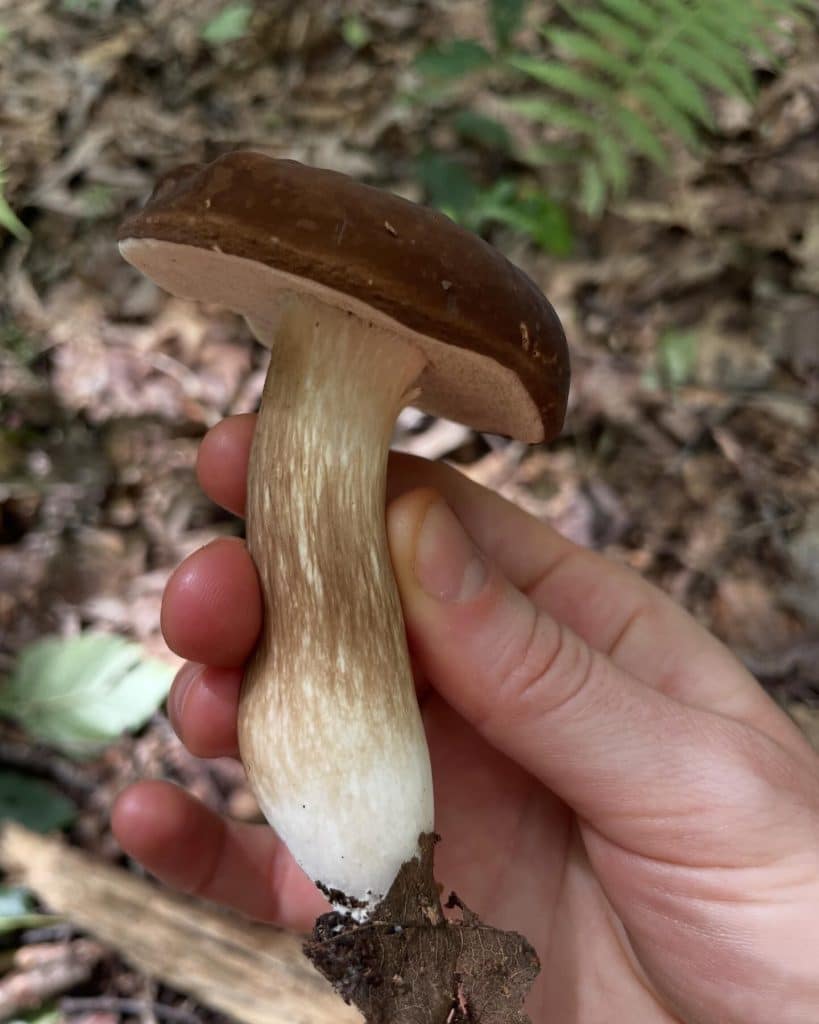
Xanthoconium affine is an edible mushroom that can be found July-October. It is mycorrhizal with hardwood trees, especially beech and oak. The cap is dark brown or reddish-brown, turning yellowish-brown. Pores are white, becoming pale yellow. The mushroom does not stain blue. The stem is streaked with a color that is paler than the cap. […]
Strobilomyces sp. – Old Man of the Woods
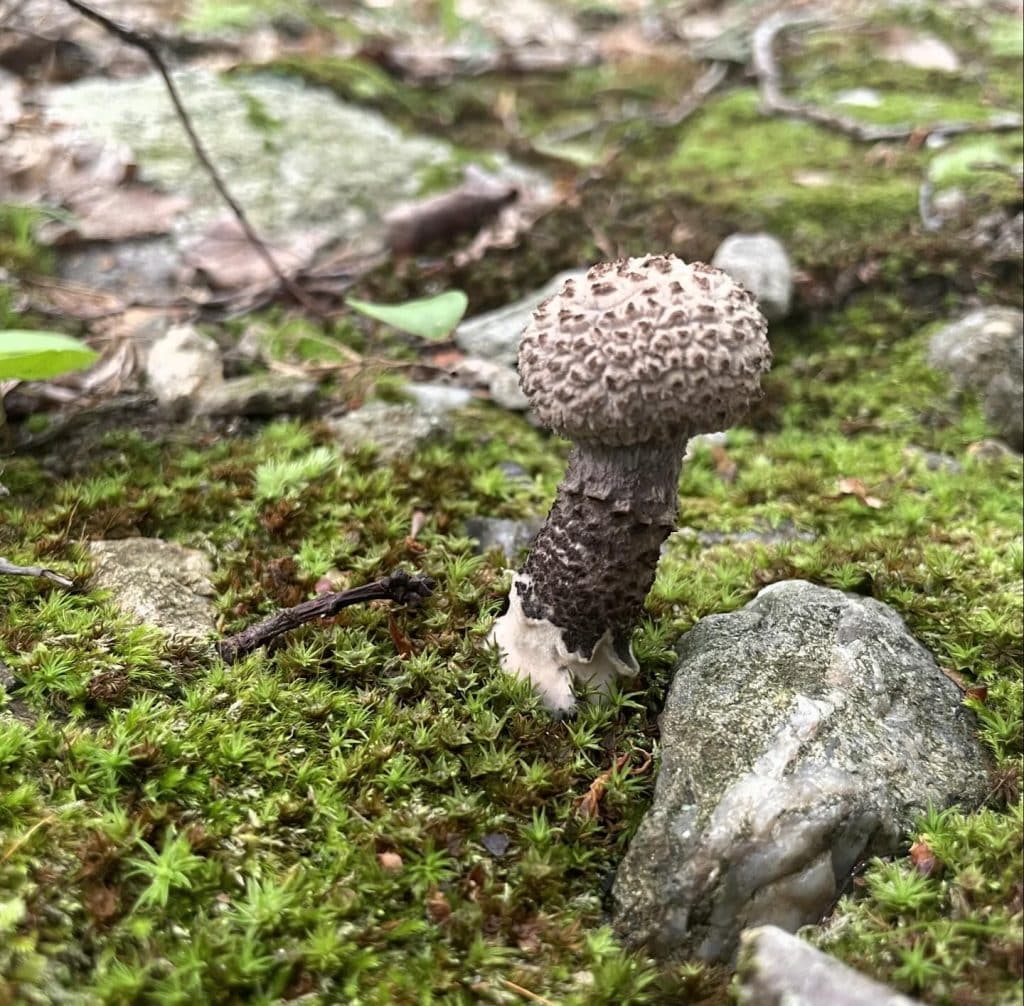
The Old Man of the Woods (Strobilomyces sp.) is an edible mushroom that fruits June-October. It can be found growing singularly or clustered in mixed hardwood or conifer forests. The cap and stem are gray to black and shaggy. Pores start off white, then turn gray and eventually black with age. Flesh turns reddish when […]
Suillus spraguei – Painted Suillus
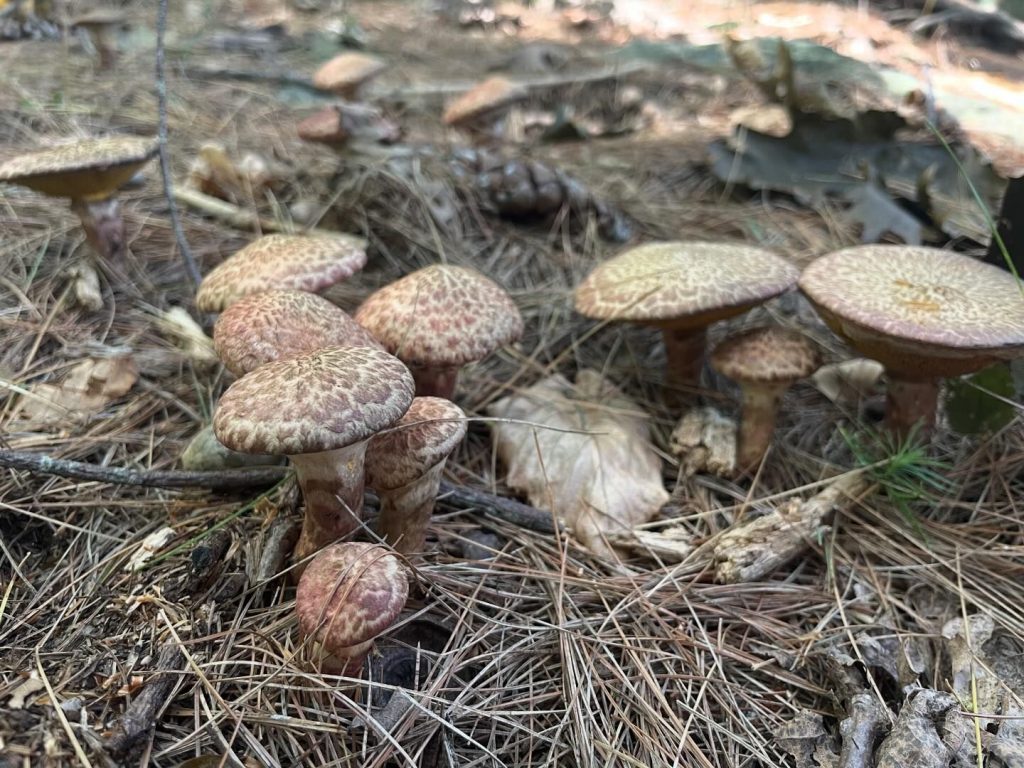
The Painted Suillus (Suillus spraguei) is an edible mushroom that can be found in conifer forests from June-October. The mushroom grows scattered or clustered in the ground. It is a mycorrhizal mushroom that often associates with pine. The Painted Suillus has a unique scaly red cap and stem. The yellow pores are covered by a […]
Tylopilus ferrugineus
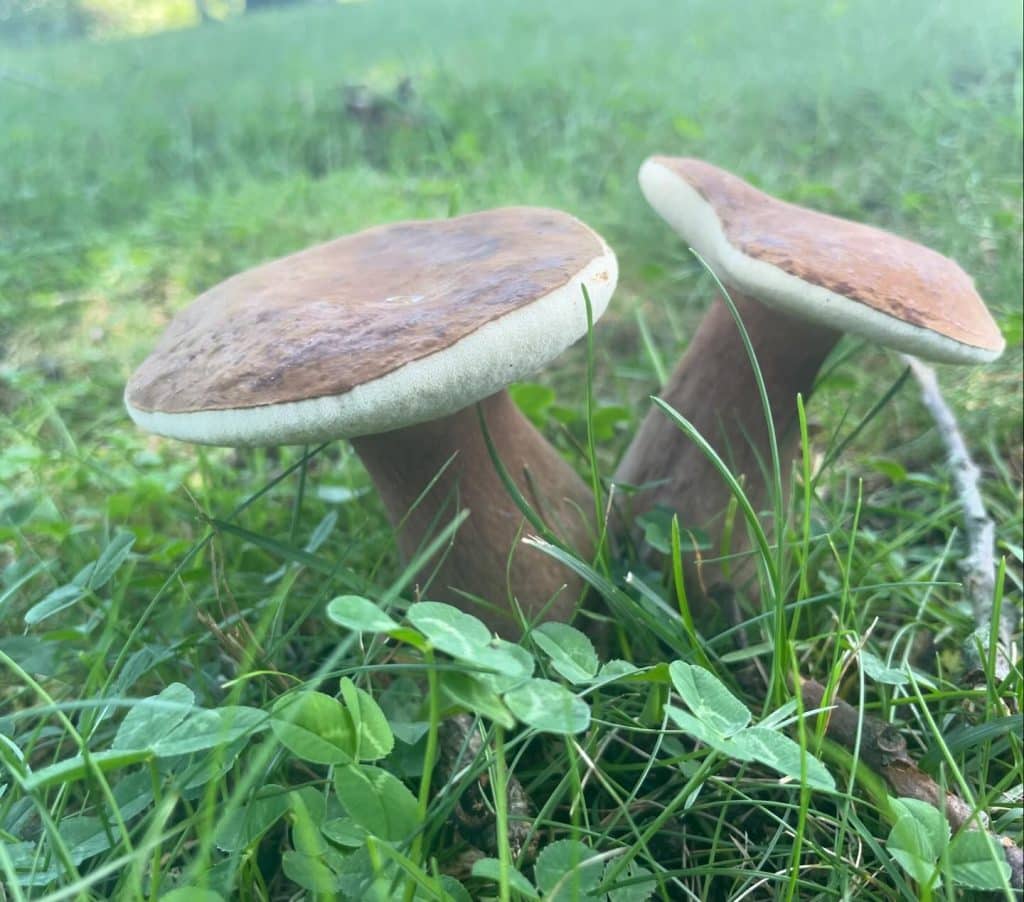
Tylopilus ferrugineus is an edible mushroom that is native to eastern North America. It fruits July-September. The mushroom is often found in grassy areas in association with oak or beech. The cap and stem are brown. The pores are white and stain brown. Young mushrooms have club-shaped stems and very firm flesh. Spore print is […]
Prunus maritima – Beach Plum
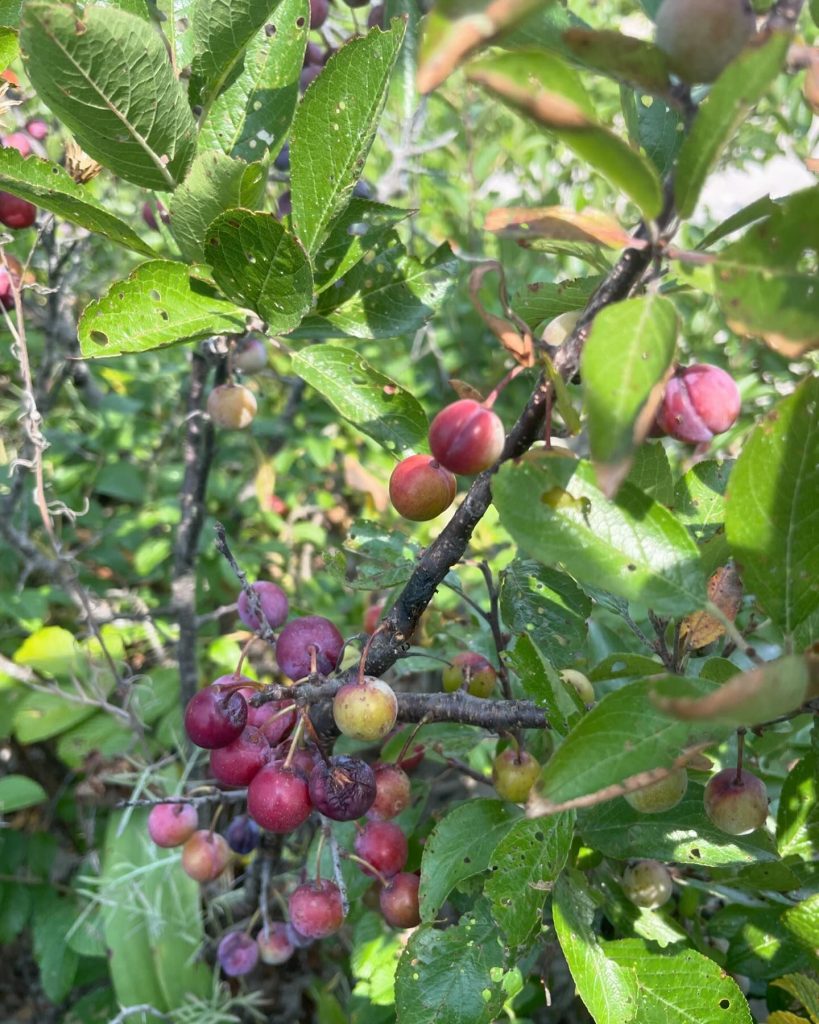
Beach plum (Prunus maritima) is a native plant with edible fruit. It is often found in dunes. It prefers full sun and has a high salt tolerance. Beach plums are shrubs that typically grow 4-8 feet tall. They produce five-petaled white flowers in spring. The leaves are alternate and finely toothed. The fruits are much […]
Xerocomus illudens
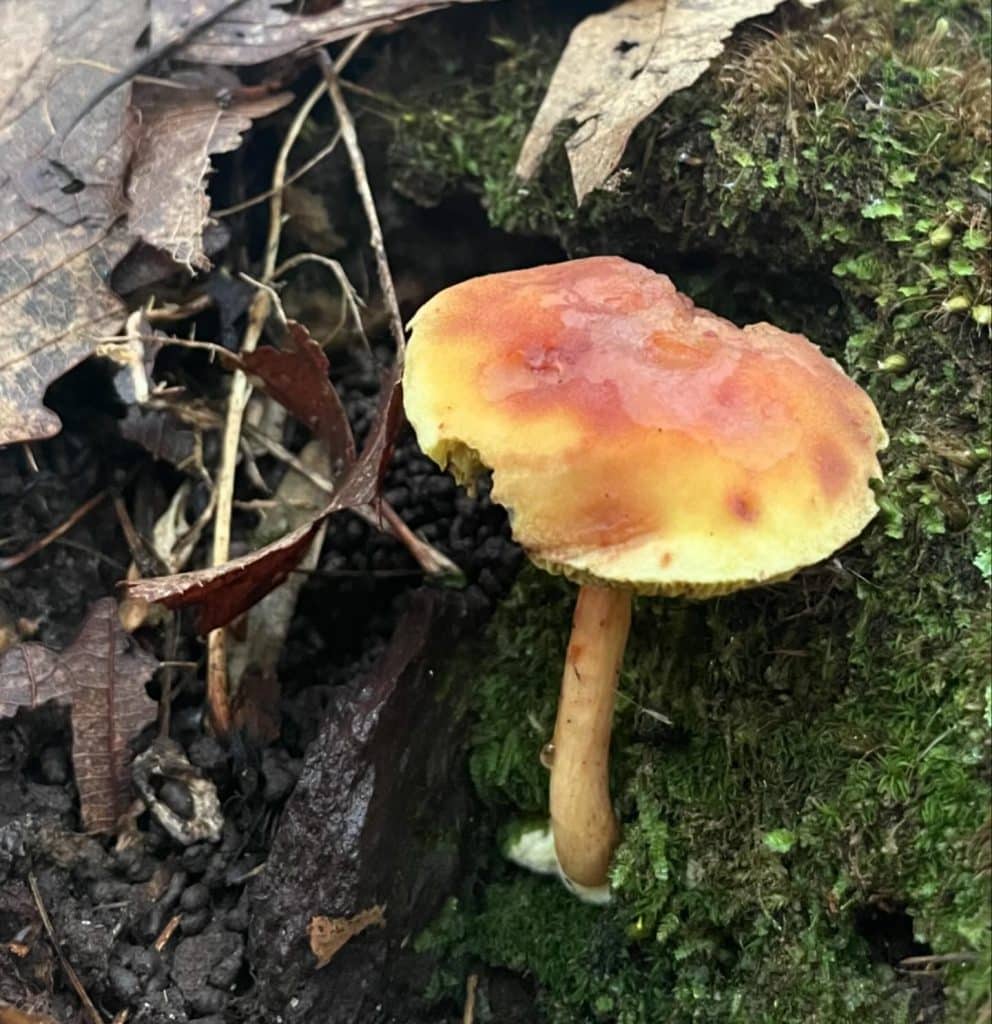
Xerocomus illudens is an edible bolete that fruits July-October. It forms mycorrhizal relationships with oaks and possibly other hardwoods. The cap is cinnamon-brown or pinkish-cinnamon colored. The pores are lemon yellow and angular. The flesh is pale yellow and does not stain blue. The stem is mustard-yellow and has a course net. Spore print is […]
Asparagus officinalis – Wild Asparagus
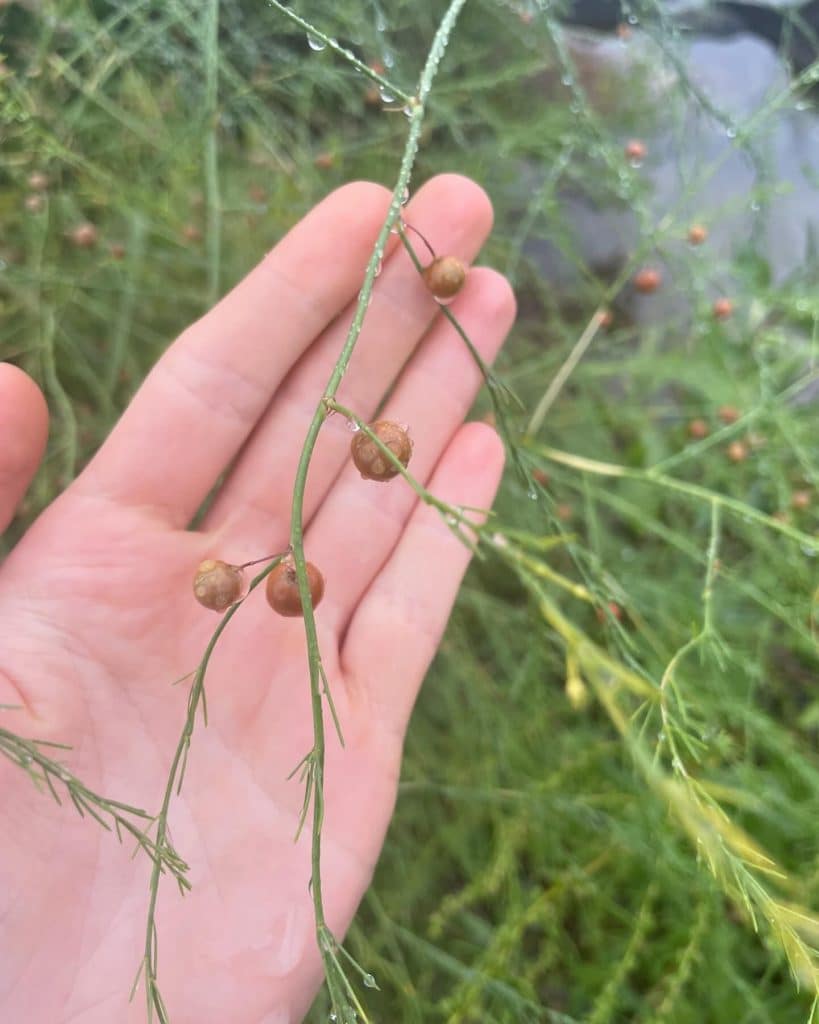
Wild Asparagus (Asparagus officinalis) is the same species as cultivated asparagus. The plant has escaped cultivation and can now be found growing in riverbanks and seashores that receive full to partial sun. Being a perennial, the plant will re-grow in the same spot year after year. Shoots that look like store-bought asparagus appear in early […]
Macrolepiota procera – Parasol Mushroom
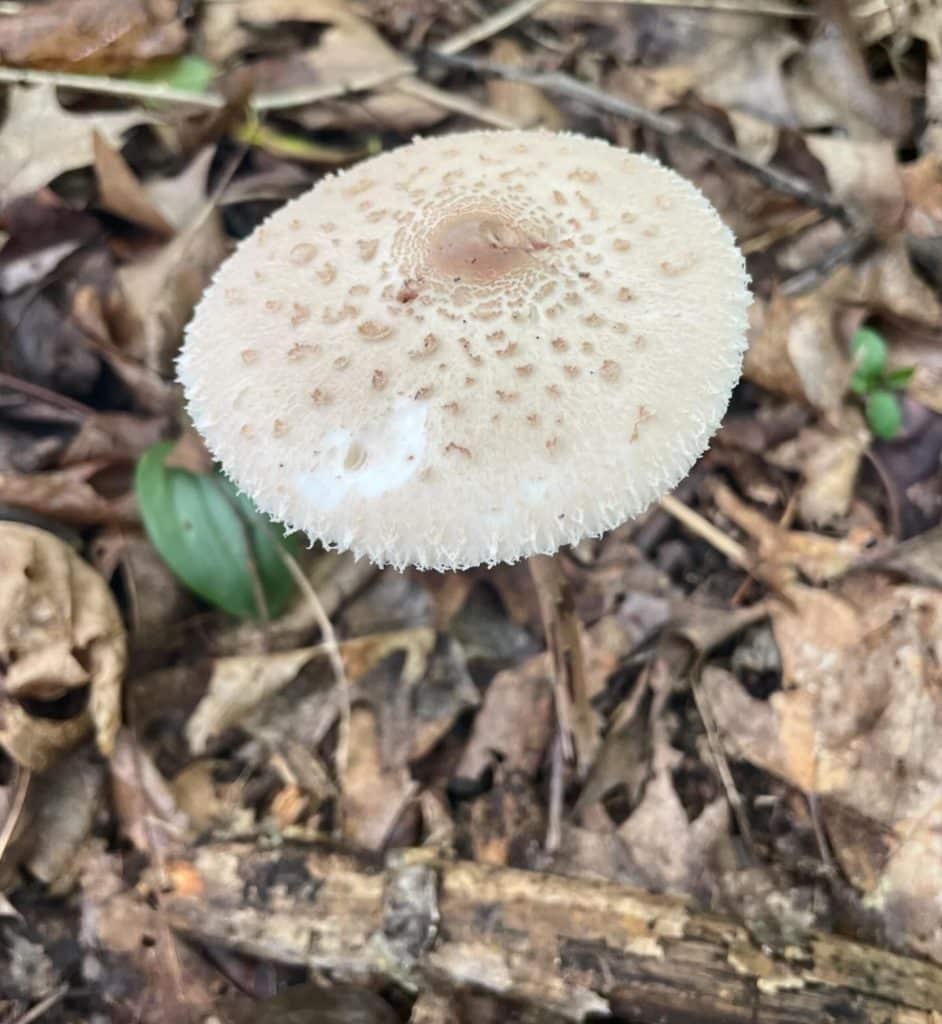
The Parasol mushroom (Macrolepiota procera) is an edible mushroom that fruits August-October. It can be found in open woodlands near conifers or hardwoods or on lawns. The parasol mushroom is saprobic. The cap has scattered brown scales and develops a rounded bump on the center. The stem is slender, tall, and bulbous at the base. […]
Rosa rugosa – Beach Rose
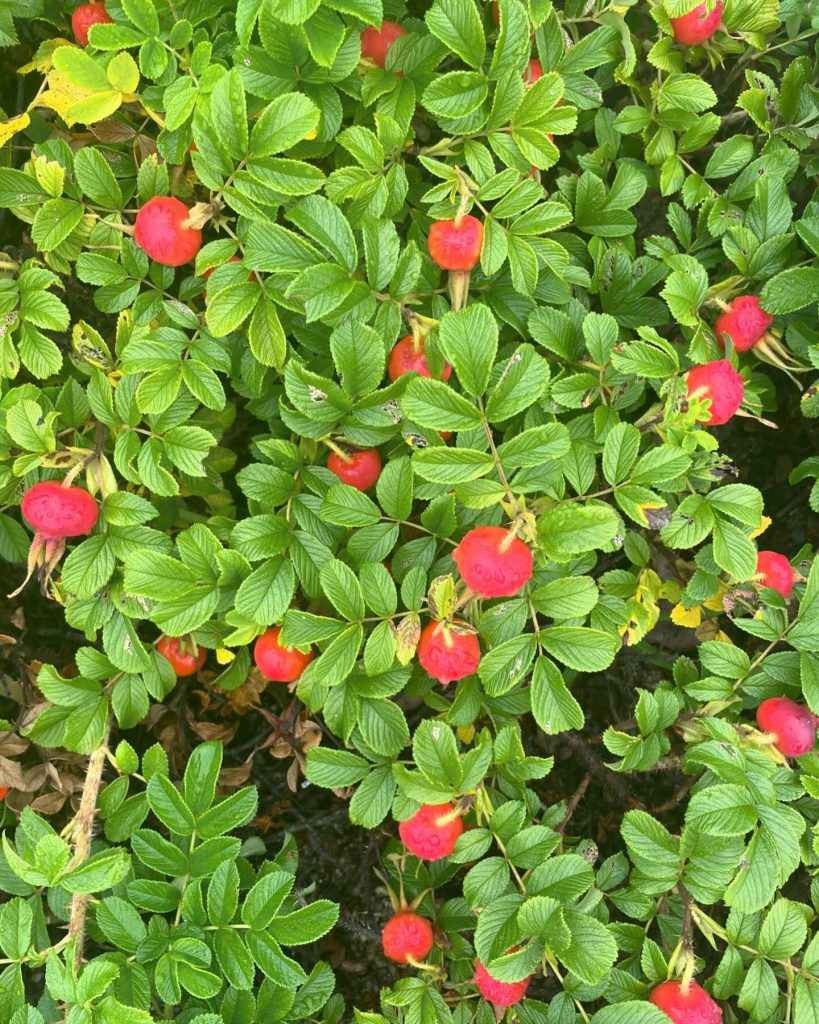
Beach rose (Rosa rugosa) is an invasive plant from Asia that was brought to the U.S. as an ornamental. It is salt tolerant so is often found near beaches. Beach roses have wrinkled, compound leaves with 5-9 leaflets. The canes have short, straight prickles. In late summer, flowers turn into rose hips that resemble tomatoes. […]
Commelina communis – Asiatic Dayflower
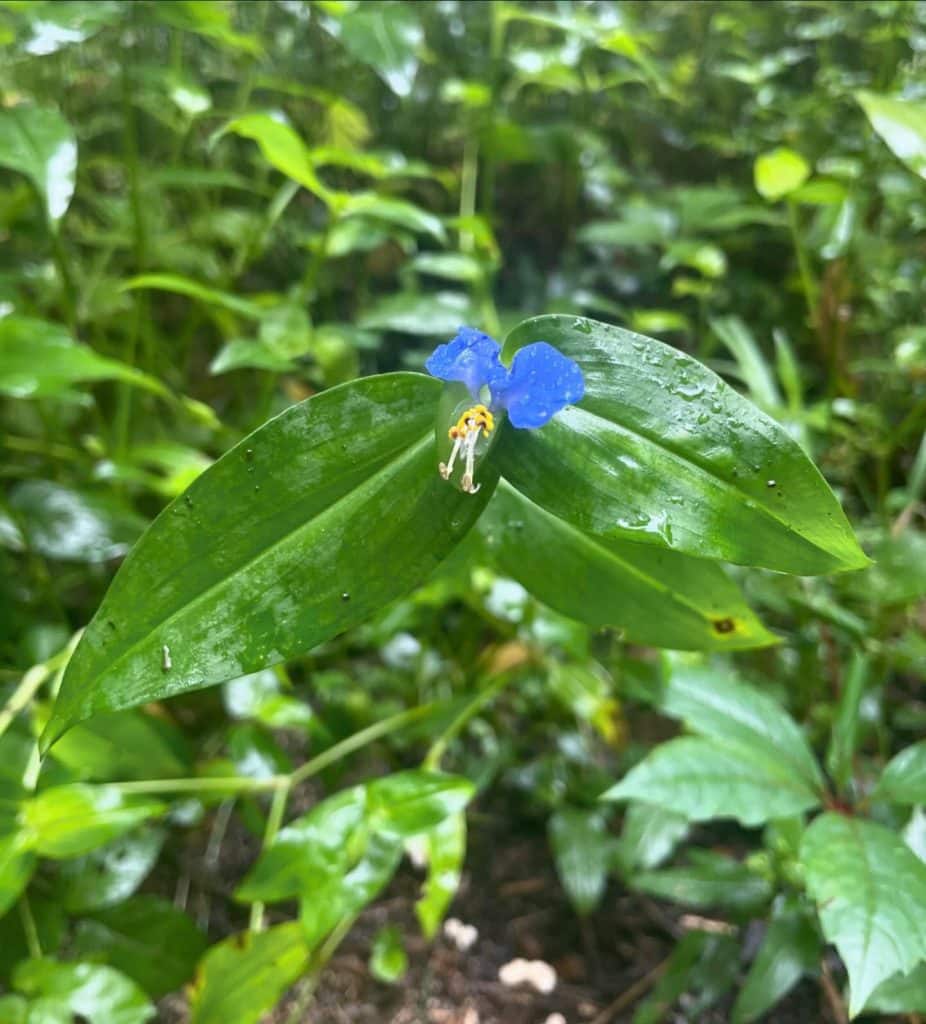
Asiatic Dayflower (Commelina communis) is a non-native annual that can be found in disturbed areas in partial shade. It has the ability to spread quickly, forming dense clusters. The plant can be identified by its unique flower. The flower consists of two larger blue petals on top and a smaller white petal underneath. Flowers last […]
Sarcodon imbricatus – Scaly Hedgehog
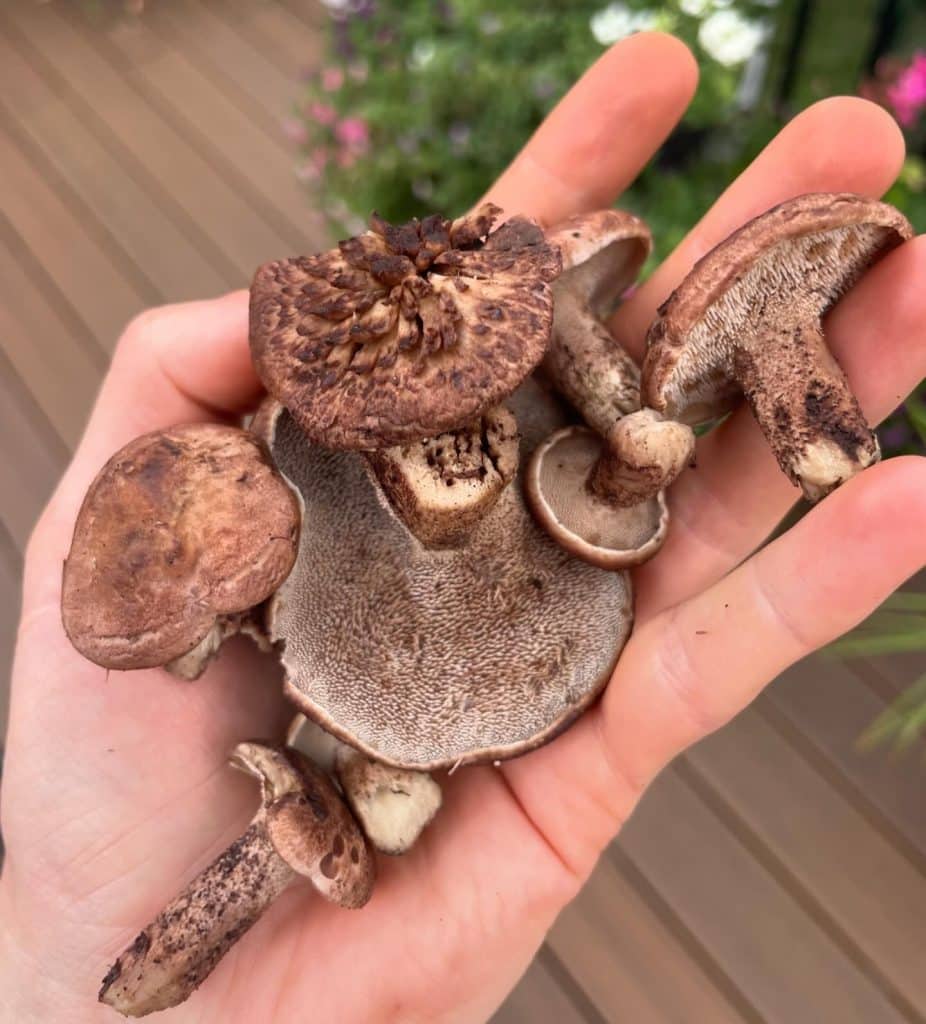
The Scaly Hedgehog (Sarcodon imbricatus) is an edible, but often bitter mushroom that can be found July-November. It grows in the ground near water or in hilly areas. The mushroom is often found growing near conifers, especially spruce. The scaly hedgehog, also known as “Hawk’s wing”, has raised brownish scales on its cap. Under the […]
Rubus allegheniensis – Common Blackberry
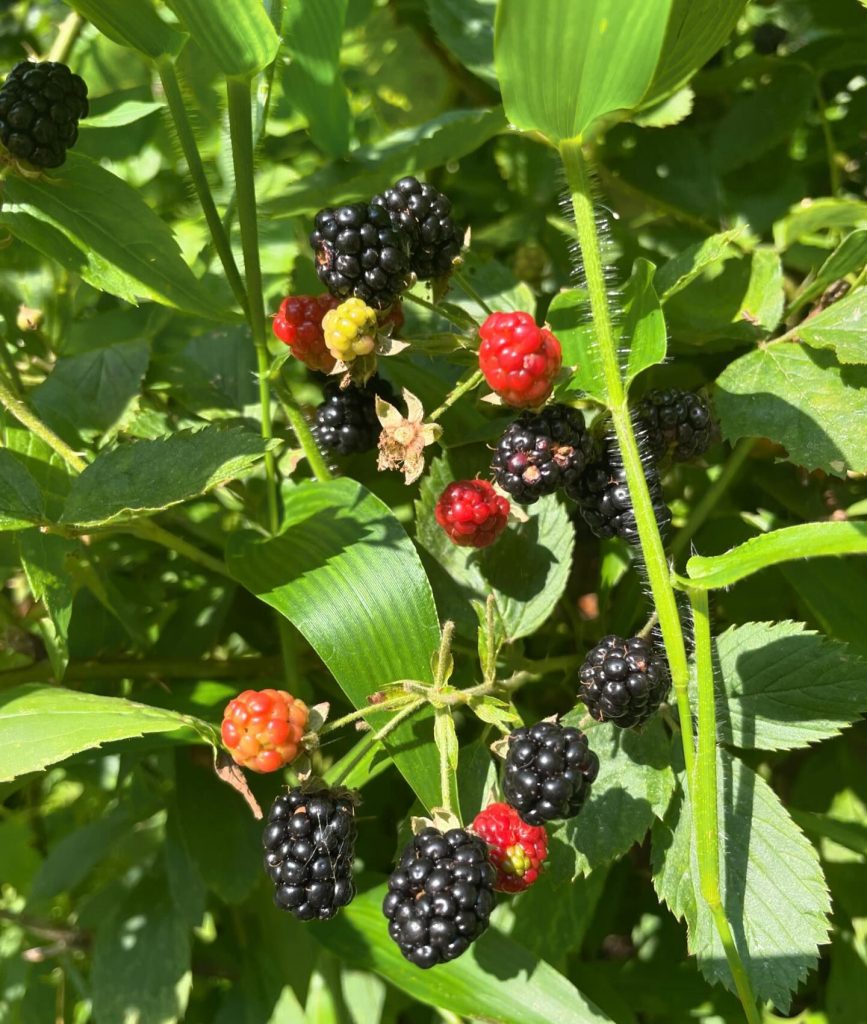
Common Blackberry (Rubus allegheniensis) is a native perennial with edible berries and leaves. It can be found along forest edges and fields in sun or partial shade. Blackberry canes can be identified by their ridged stems and wide, curved prickles. Leaves are compound with 3 to 7 leaflets. Flowers with five white petals appear in […]
Baorangia bicolor – Bicolor Bolete
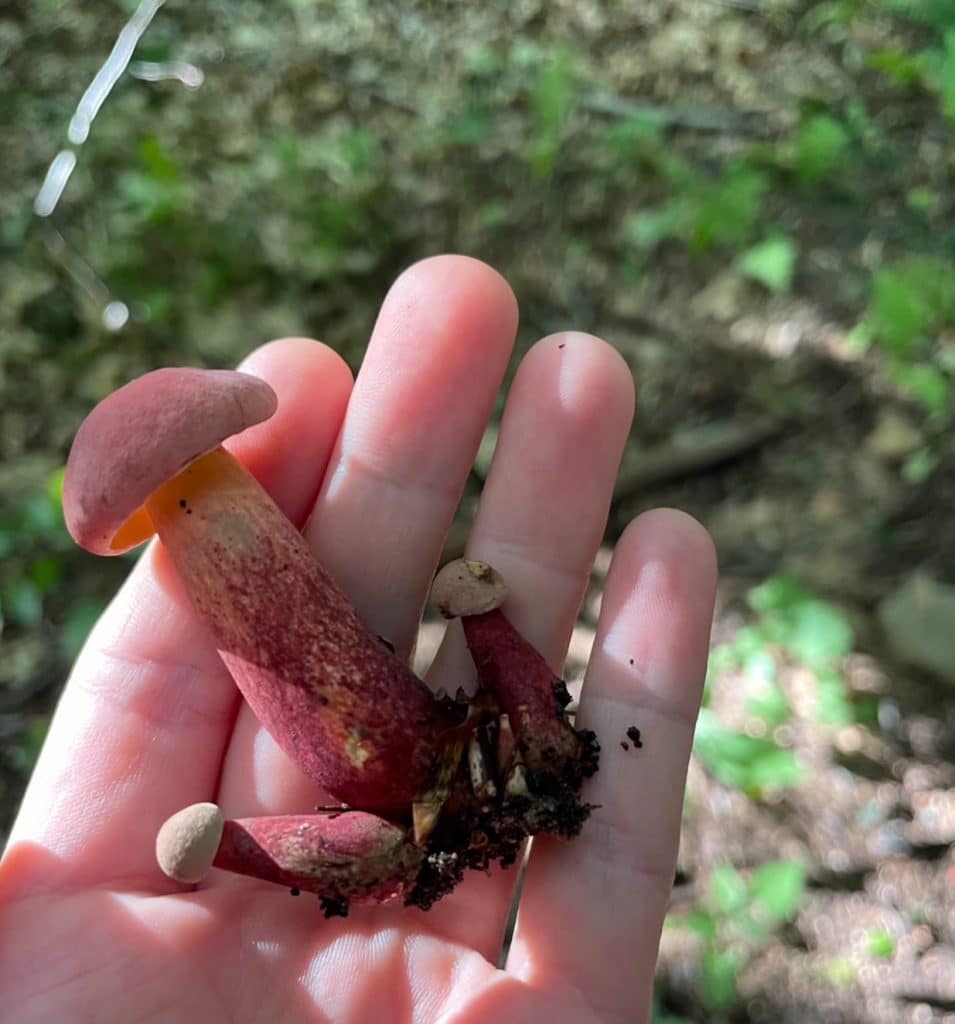
Bicolor Bolete (Baorangia bicolor) is an edible mushroom that can be found from June-October. It has a mycorrhizal relationship with oak and other hardwood trees. Bicolor boletes grow in the ground scattered or in small clusters. The cap is pinkish to dark red. Occasionally young mushrooms will have a yellow cap. The pore surface is […]
Clinopodium vulgare – Wild Basil
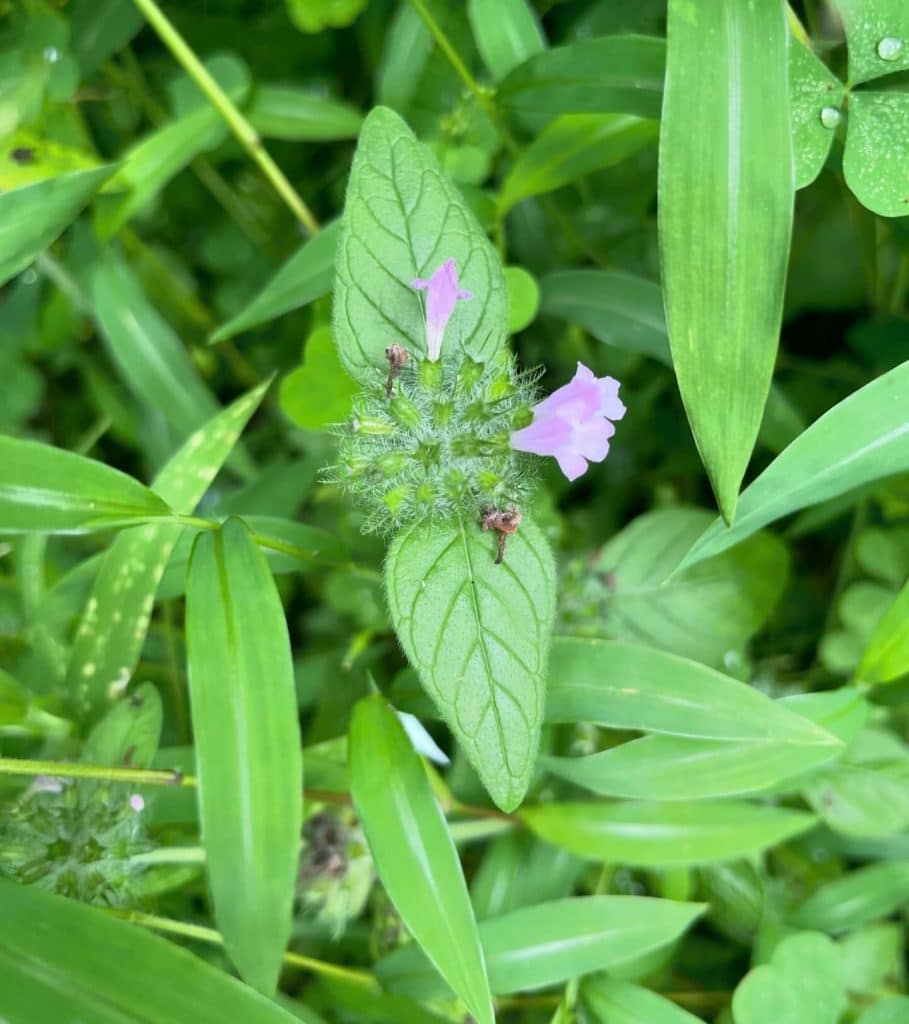
Wild Basil (Clinopodium vulgare) is a native edible perennial in the mint family. It can be found at the edge of forests and in meadows. The leaves are opposite and often have wavy edges. The plant is softly hairy. The stem is four-sided. Flowers are composed of five petals and range in color from pink […]
Viburnum lantanoides – Hobblebush
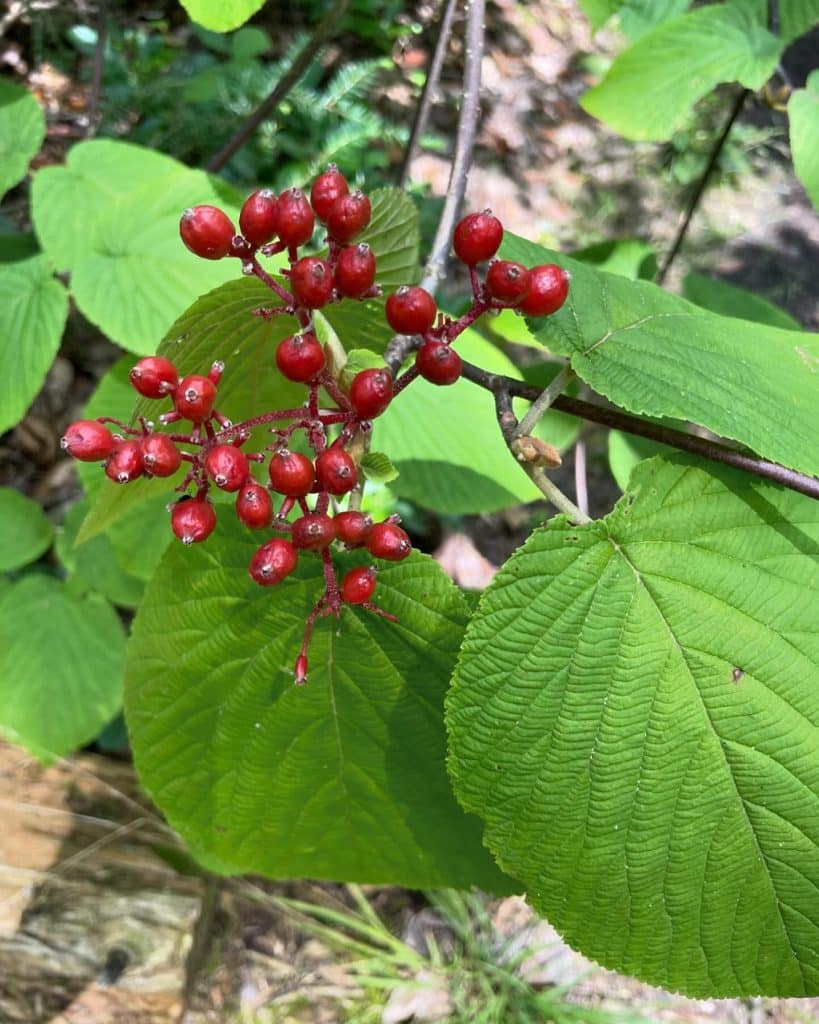
Hobblebush (Viburnum lantanoides) is a native shrub with edible berries. It can be found in rich, moist woodlands. The plant is very shade tolerant. Hobblebush grows particularly well along the Adirondacks where it can form dense patches. The plant produces clusters of flat-topped white flowers in the spring. Flowers become red berries that eventually ripen […]
Rubus strigosus – Wild Red Raspberry
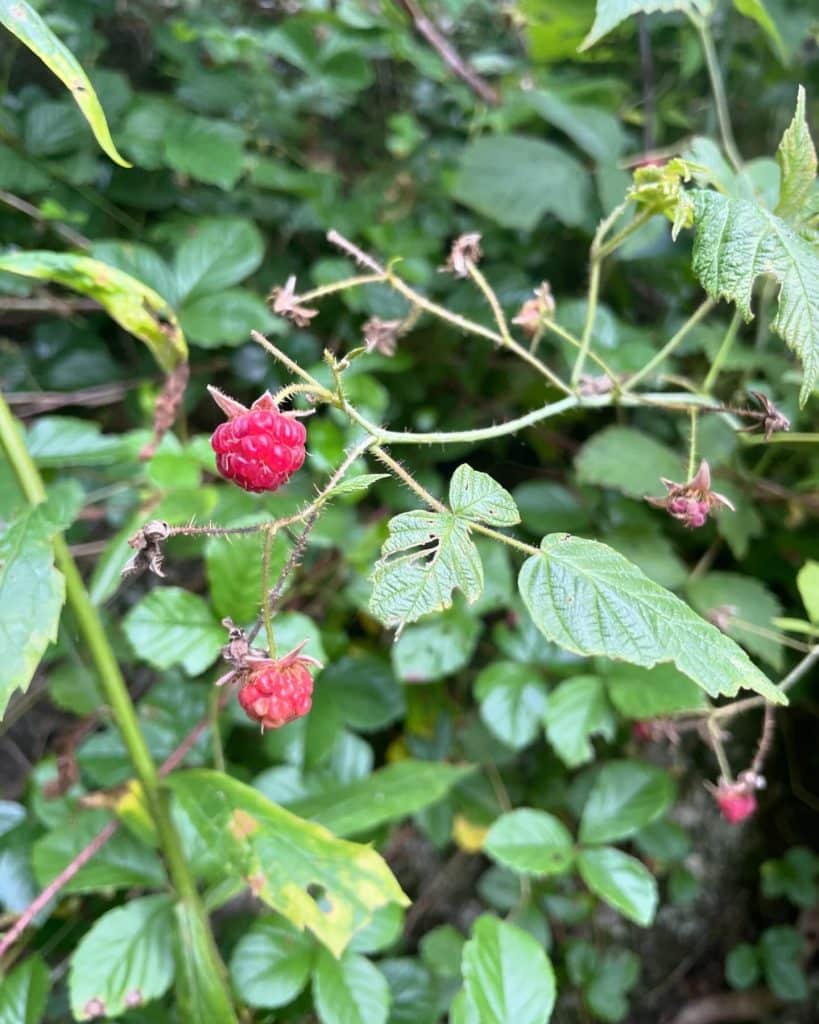
Wild red raspberry (Rubus strigosus) is a native plant that is closely related to cultivated raspberries (Rubus idaeus). Red raspberries can be found at the edges of woods, fields, and roadsides. The leaves are divided into 3-7 leaflets which have a green upper surface and silvery-white undersurface. Berries ripen mid-to-late summer. Red raspberries are delicious […]
Lactifluus hygrophoroides – Hygrophorus Milk Cap
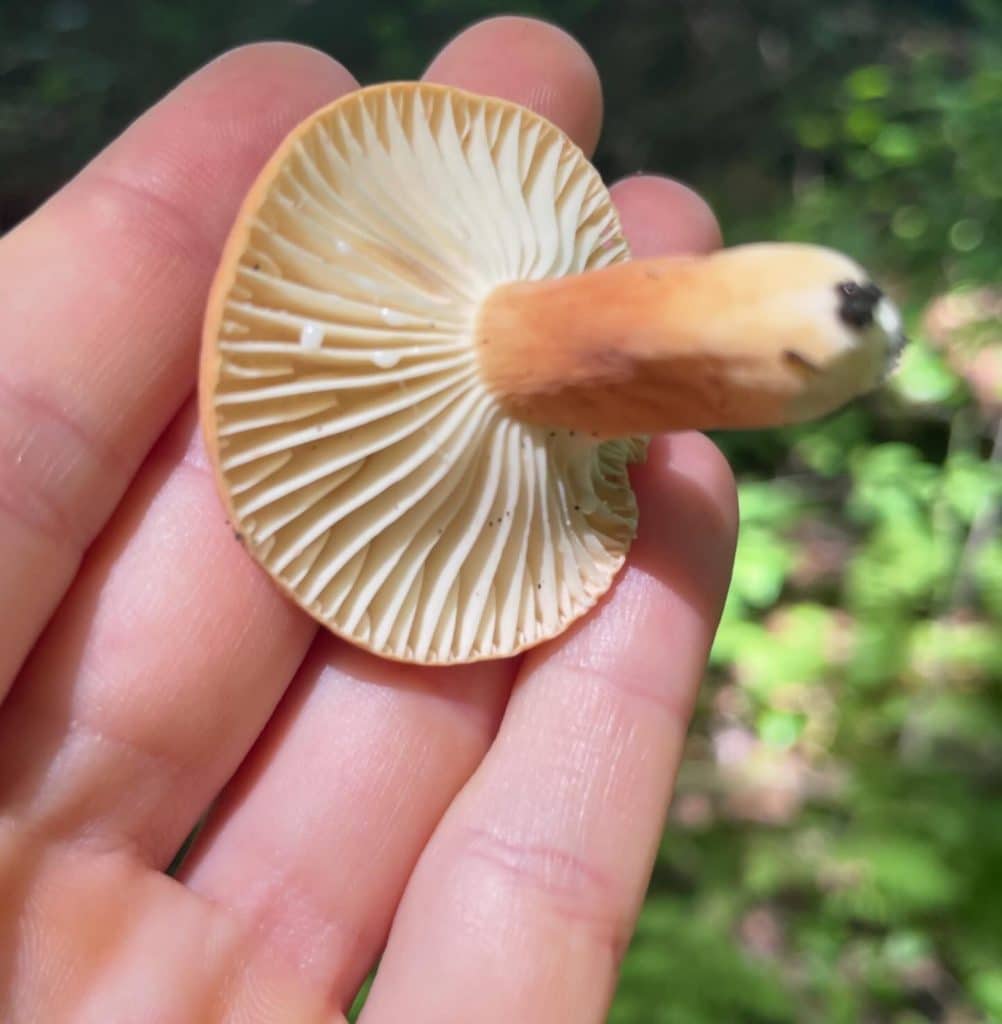
Hygrophorus milk cap (Lactifluus hygrophoroides) is an edible mushroom that can be found in the eastern United States. It fruits late summer to early fall. The Hygrophorus milk cap forms mycorrhizal relationships with oaks and potentially other hardwoods. It grows singularly on the ground near its host tree. The cap is pale orange to reddish-brown […]
Phylloporus rhodoxanthus – Gilled Bolete
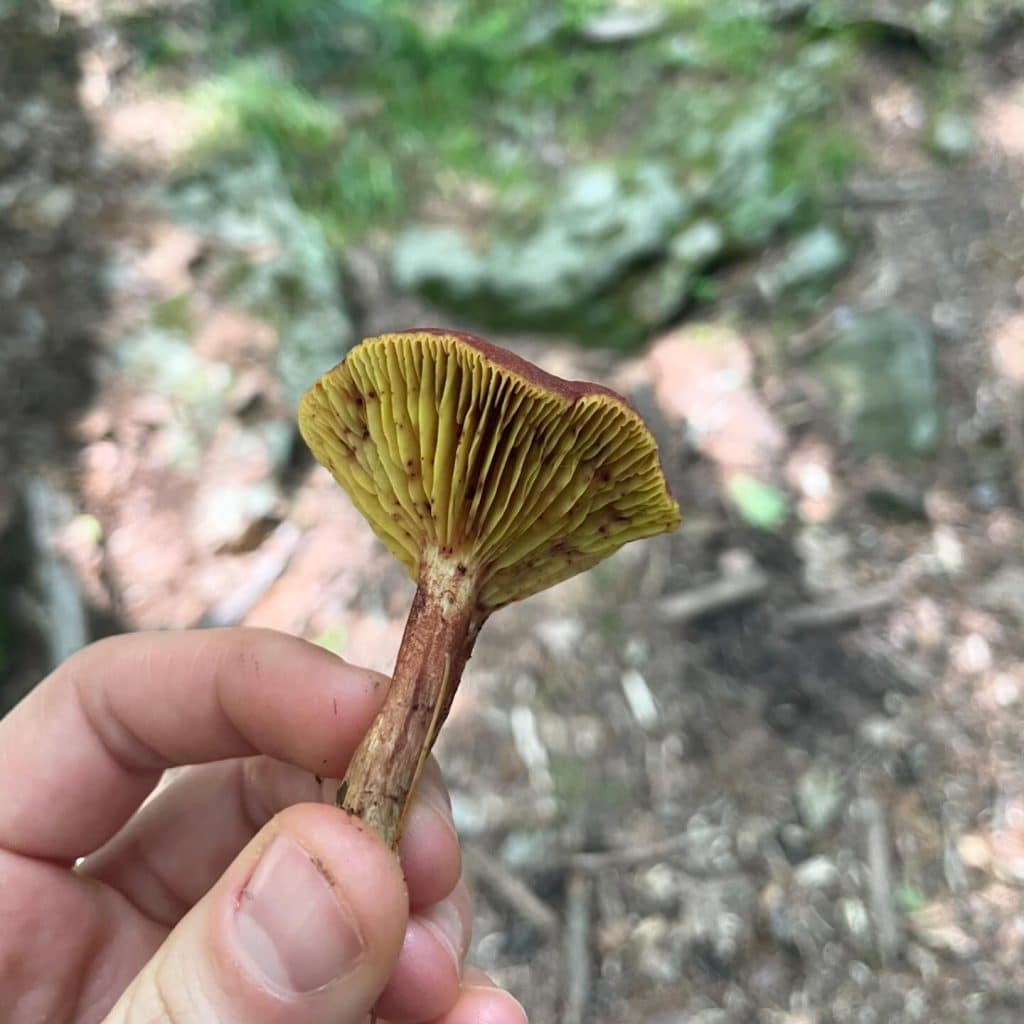
The Gilled Bolete (Phylloporus rhodoxanthus) is an edible mushroom that can be found June-October. It is mycorrhizal with beech and oak. Phylloporus rhodoxanthus is the most common gilled bolete mushroom in North America. There are 6+ species of gilled boletes in North America. The gilled boletes have a bolete-like shape with a thick cap and […]
Craterellus ignicolor – Flame Chanterelle
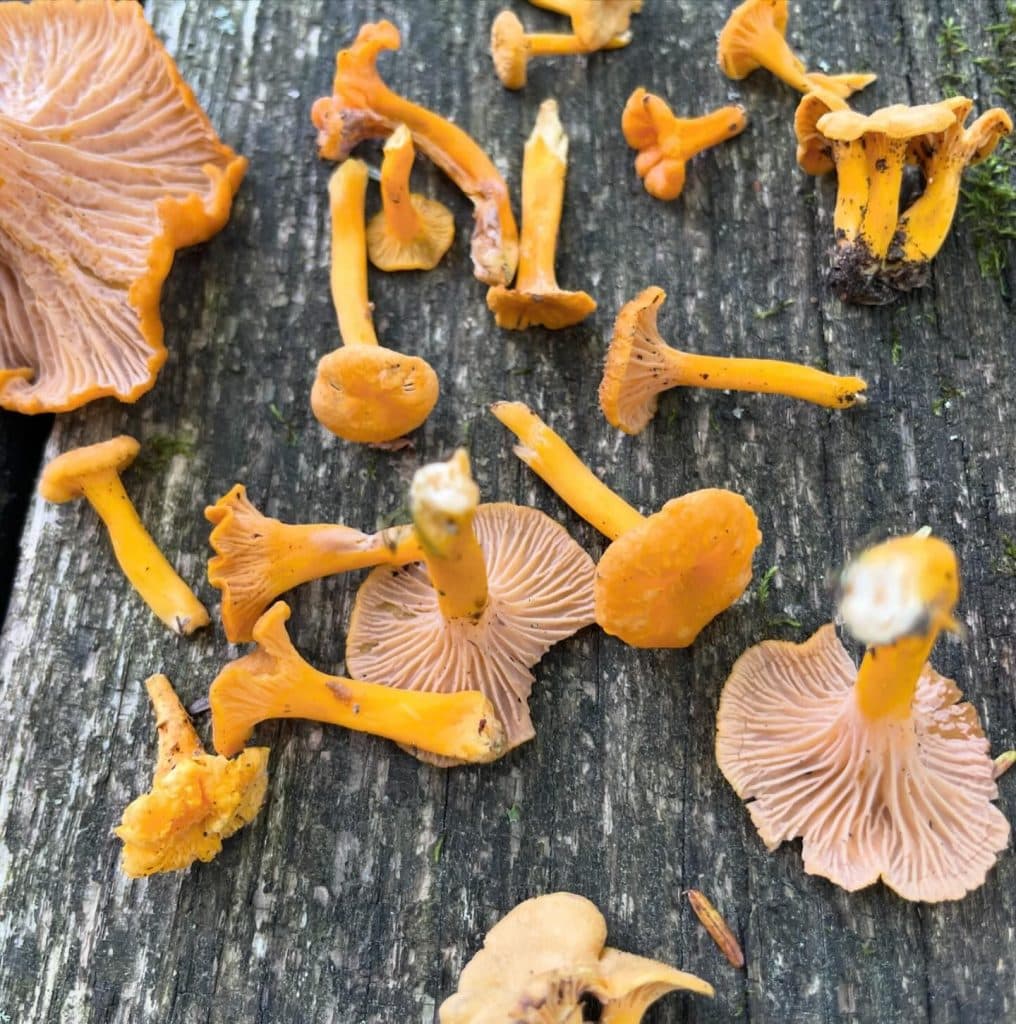
Flame Chanterelle (Craterellus ignicolor) is a choice edible mushroom that is native to eastern North America. It can be found July-November in swampy forests. The flame chanterelle, also known as “yellowfoot chanterelle” can tolerate very wet environments. It is often found growing in clusters in moss of hardwood forests. It is mycorrhizal with oaks, beech, […]
Craterellus fallax – Black Trumpet
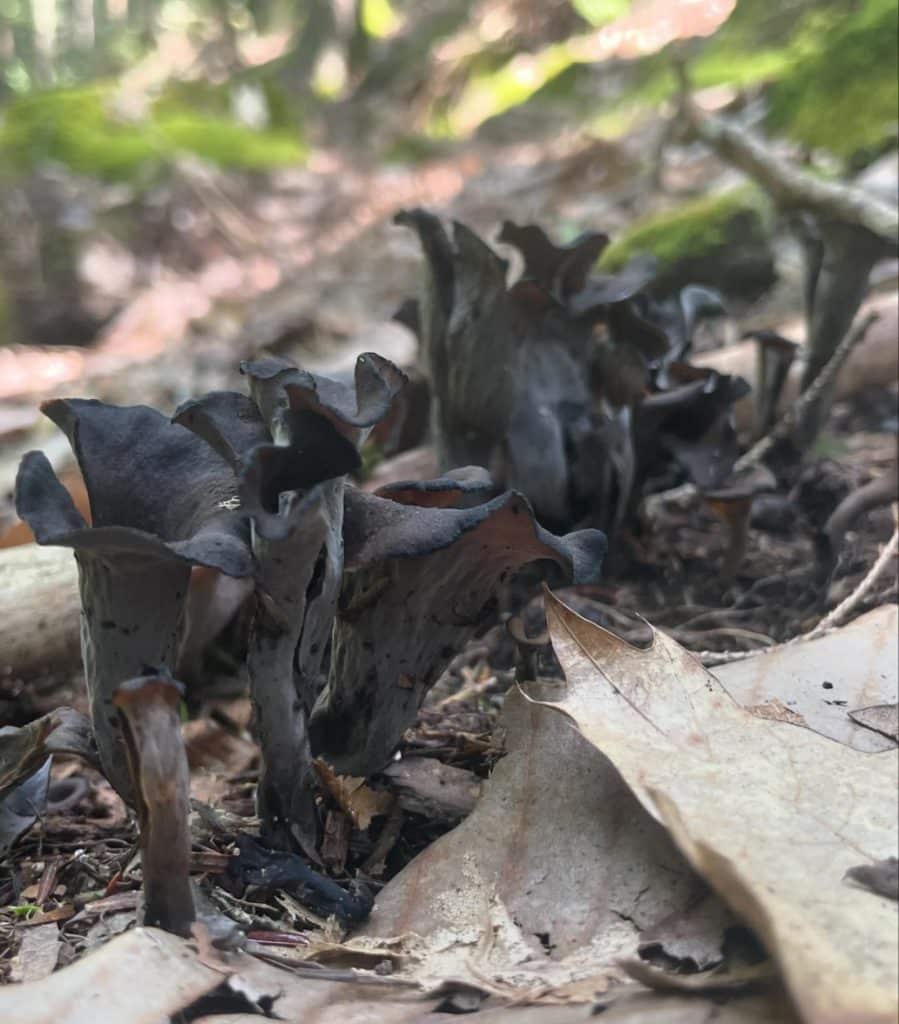
Black trumpets (Craterellus fallax) are a delicious wild mushroom whose flavor is compared to truffles. Black trumpets can be found summer to fall. They often fruit in moss, near oak and beech trees. Black trumpets can be either mycorrhizal or saprobic. They are in the same family as chanterelles and are often found growing in […]
